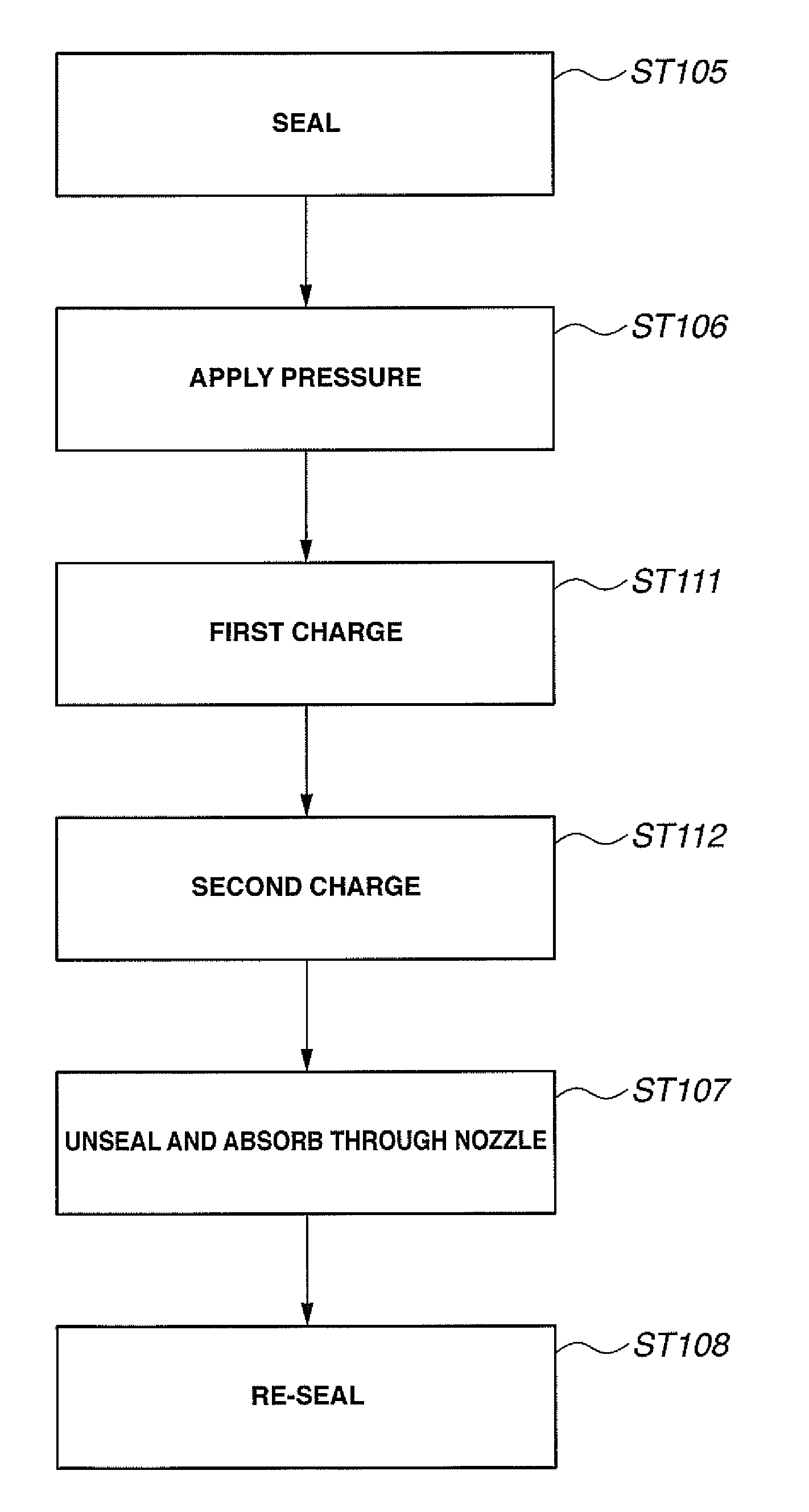Production method for non-aqueous electrolyte secondary battery
- Summary
- Abstract
- Description
- Claims
- Application Information
AI Technical Summary
Benefits of technology
Problems solved by technology
Method used
Image
Examples
first embodiment
[0019]FIGS. 1(a) and 1(b) show a cross sectional view of a non-aqueous electrolyte secondary battery manufactured by the manufacturing method for a secondary battery in a first preferred embodiment. FIG. 2 shows a process flowchart for explaining the manufacturing method for the secondary battery in the first preferred embodiment. FIG. 1(a) shows a perspective view of the non-aqueous electrolyte secondary battery and FIG. 1(b) shows a cross sectional view cut away along a line A-A of FIG. 1(a).
[0020]As shown in FIG. 1(a), a non-aqueous electrolyte secondary battery 1 manufactured by the manufacturing method in the first embodiment is a large capacity lithium ion secondary battery suitable for driving, for example, a vehicle in which the non-aqueous electrolyte secondary battery is mounted. A size of an electrode is, for example, 210 mm×297 mm or 148 mm×210 mm and a capacity of the battery is 4 Ah or higher.
[0021]Non-aqueous electrolyte secondary battery 1 manufactured in the first e...
second embodiment
[0033]FIG. 3 shows a process flowchart for explaining the manufacturing method for the secondary battery in a second preferred embodiment according to the present invention.
In the second embodiment, a pressure application step of applying a pressure to exterior body 6 sealed at the seal step is interposed between the seal step and the charge step.
In the second embodiment, the same steps as the manufacturing method in the first embodiment designate the same signs as the first embodiment and their explanations will be omitted. In addition, in the second embodiment, the same elements as the non-aqueous electrolyte secondary battery in the first embodiment designate the same signs and their explanations will be omitted.
[0034]As shown in FIG. 3, the manufacturing method of the secondary battery in the second embodiment includes: storing electrode laminate 5 in which separators 4 are disposed between positive electrodes 3a and negative electrodes 3b and the electrolyte within exterior bod...
modification example 2a
of the Second Embodiment
[0040]In the pressure application step in the second embodiment, a roll press working using a roll is carried out in place of the flat plate.
In this pressure application step, the roll press working using the roll is carried out in a state in which exterior body 6 is sealed so that gas within electrode laminate 5 is moved to the outside of electrode laminate 5. After the seal step, gas accumulating section 8 of exterior body 6 is deflated. However, the movement of gas causes the flexible laminate film is inflated and gas can be accumulated within gas accumulating section 8. The roll press working may preferably be carried out under the pressure about 1 kgf / cm2 through 100 kgf / cm2 and a movement of a roll press may, preferably, be moved from the outside of exterior body 6 along a surface of electrodes 3 of electrode laminate 5.
[0041]A surface of the roll press is made of a material having an insulating characteristic and may preferably be made of a resin mater...
PUM
| Property | Measurement | Unit |
|---|---|---|
| Pressure | aaaaa | aaaaa |
| Electric potential / voltage | aaaaa | aaaaa |
Abstract
Description
Claims
Application Information
 Login to View More
Login to View More - R&D
- Intellectual Property
- Life Sciences
- Materials
- Tech Scout
- Unparalleled Data Quality
- Higher Quality Content
- 60% Fewer Hallucinations
Browse by: Latest US Patents, China's latest patents, Technical Efficacy Thesaurus, Application Domain, Technology Topic, Popular Technical Reports.
© 2025 PatSnap. All rights reserved.Legal|Privacy policy|Modern Slavery Act Transparency Statement|Sitemap|About US| Contact US: help@patsnap.com



